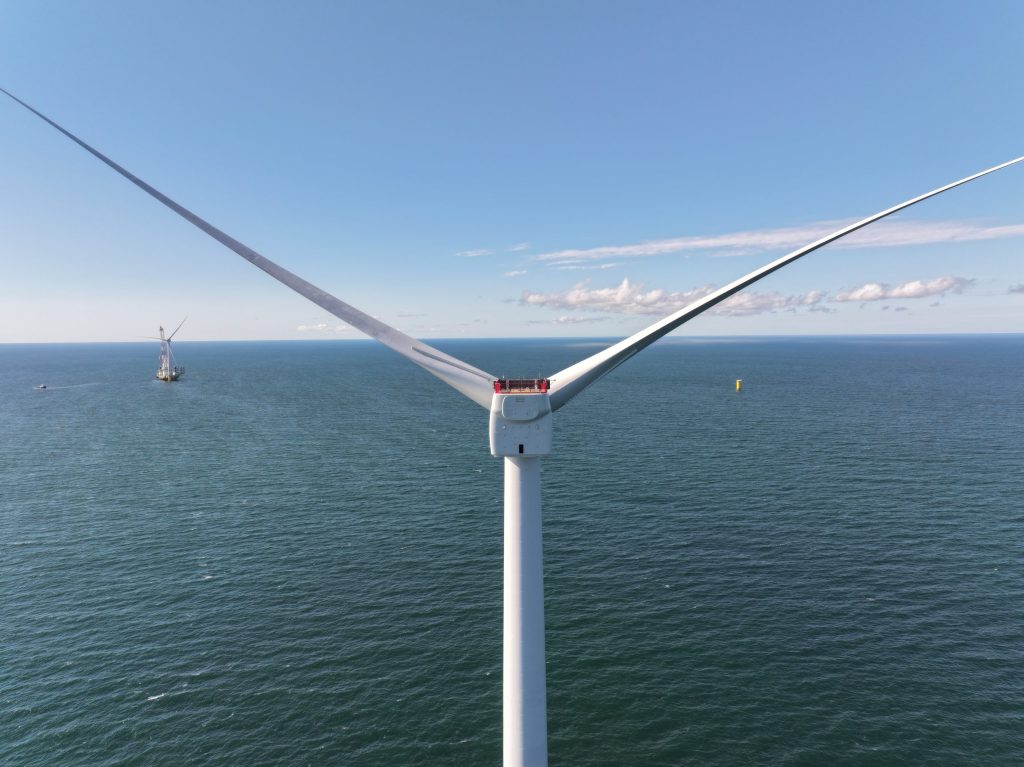THE NANTUCKET SELECT Board has released what might be described as a dispatch from the front lines of offshore wind development, a hot take on what it’s like to be a municipality trying to co-exist with the nation’s first industrial-scale wind farm.
The hot take takes the form of answers to 25 frequently asked questions, some of which merely lay out the existing regulatory landscape Nantucket finds itself in while others criticize federal regulators for prioritizing national concerns over those of local communities.
First off, the Select Board makes clear to residents that it has no permitting authority over offshore wind farms. “Local governments do not control federal and state-level energy/climate policies, and Nantucket does not have the ability to authorize or deny offshore wind energy development in federal waters,” the board said. “There is a perception that the town does have this control, and that is simply not true.”
Despite the lack of authority over offshore wind farms, the Nantucket officials say the fallout from the projects on local communities can be enormous, extending beyond the foam and fiberglass from a broken wind turbine that has been washing up on the island’s beaches.
The board said it worries most about the impact wind farms could have on tourism in coastal communities. “If even a small percentage of regular visitors to these communities decide not to return because they do not prefer formerly natural and historic environments now dominated by hundreds of turbines, our communities will lose thousands of jobs,” the board said. “Indeed, the number of jobs at risk far out-numbers the relatively small number of well-paying jobs tied to the temporary period of wind farm construction.”
The board said the loss of visitors could have a ripple effect on taxes that support local government. “Those who say there are no risks posed by industrialization of ocean viewsheds to heritage-tourism and our sense of place have no reliable data to back their claims and, in some cases, possess data showing the threat is quite real,” the document states.
The Select Board sharply criticizes the main federal offshore wind regulator, the Bureau of Ocean Energy Management, or BOEM. “We do not believe BOEM is fulfilling its duty,” the board said. “We have seen little balance in BOEM’s permitting approach to offshore wind, which significantly favors industry developers, including foreign-government owned developers, over the legitimate concerns of US coastal communities and Tribal Nations.”
The board’s key concern is that BOEM is failing to take into account the cumulative impact of all the wind farms being planned. “This ‘segmenting’ of projects denies the public the opportunity to fully understand and weigh the scaled-up harms of industrialization of large swaths of our near-shore oceans,” the board said. “Segmenting is a tactic employed by the fossil fuel industry to avoid scrutiny, and we are disappointed to see BOEM enabling it in the green energy context.”
The board said BOEM is supposed to analyze the potential harm a wind farm may cause and then develop a plan to mitigate that harm; instead, BOEM is approving wind farms and then planning mitigation after the fact. “By shortchanging and reordering its process for offshore wind, BOEM is creating a bad precedent for all industry,” the board said.
“While everyone must be prepared to sacrifice to battle climate change, it is a false choice to say that the only way to timely pursue strategies for climate change is to sacrifice the character and economic sustainability of historic communities,” the board said.
Nantucket officials said they felt let down by BOEM so they negotiated directly with the developers of Vineyard Wind to mitigate the impact of the wind farm. The officials said the wind farm company was cooperative, with the CEO sitting down face to face to meet with residents.
The Nantucket Select Board said it won a number of concessions to minimize the impact of the project on its “historic viewshed,” including moving the closest row of turbines further away from Nantucket and installing a system that would turn on turbine lights only when an aircraft is in the vicinity, a practice that is now standard on most wind farm projects. The Select Board said it also negotiated roughly $34.4 million in mitigation payments over 30 years, far more than the $230,000 BOEM had negotiated.
BOEM officials had no immediate comment when asked about the claims of the Nantucket Select Board.
The post Nantucket Select Board no fan of federal wind farm regulator appeared first on CommonWealth Beacon.

